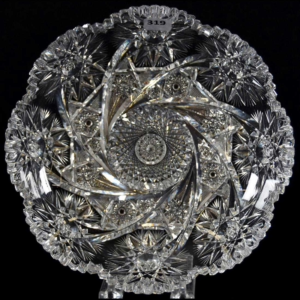Conglomerate Stone – properties, virtues & benefits
Conglomerate Stone, a natural assemblage of cemented pebbles and sand, seduces with its singular texture and robustness. Discover its geological history and its uses in construction and decoration.
STONE CHARACTERISTICS
- Chakra: Root.
- Properties: Stability, Anchoring.
- Astrology: Saturn.
- Zodiac: Capricorn.
- Elements: Earth.
- Colors: Beige, Gray, Brown.
- Hardness: 2-3 (Mohs scale).
- Chemical Formula: Variable (silica, calcite, iron oxides).
- Associated god: Gaia.
CONGLOMÉRAT – HIS HISTORY
Conglomerate stone is a rock derived from the decomposition of other rocks, which have been bound together by a natural cement. To be considered a conglomerate stone, identifiable Pieces must be larger than 2mm. Although most conglomerates are considered sedimentary rocks, some may also be of active volcanic origin.
There are three main types of conglomerate: breccia, composed of angular pebbles; poudingues, formed from rounded pebbles; and tillites, composed of both rounded pebbles and angular pebbles. These different rocks are formed from different rock sources.
Conglomerates are often formed when the sea floods a continental surface, as in Normandy. Ossiferous conglomerates, rich in bird, reptile or mammal bones, were first discovered at Meudon in 1836.
ROLL STONE CONGLOMERAT – ITS ORIGIN AND COMPOSITION
Rocs that have been formed from the decomposition of other rocks are called conglomerates. Breccias are angular elements while poudingues are rounded elements, all bound together by a natural cement of fine particles. Conglomerate stones have therapeutic virtues that are unique to many other rocks, but their origin is uncertain, although it is thought to be due to the erosion of reliefs.
Conglomerates can easily be found in countries with mountains, notably in Brittany, Rennes and Côtes-d’Armor in France. However, conglomerates should not be confused with Landes stone, which is a different kind of stone. Montfort poudingue, a conglomerate composed of whitish quartz elements, is one of the most widely used in construction due to its heterogeneity. In the last century, it was used to build churches, industrial buttresses and even the post office.
The Saint-Péran stoup was carved from Montfort poudingue, and many houses in the Rennes area contain this rock.
The Erquy region has a Paleozoic base consisting mainly of conglomerate rocks. These rocks are predominantly quartz, but also contain reddish cornelians and bluish-black phtanite pebbles. They are very resistant and can be found locally in the region. The stone was used to build the bridge jetty at Cap d’Erquy and private homes in the Dahouët region.
Landes stone, which is used in construction in Brittany and around the Bay of Saint-Brieuc, is recognizable by its dark red hue and structure composed of abundantly coated angular fragments. This conglomerate stone is welded by a ferruginous cement and is rich in iron, which gives it its dark color. The elements that make it up vary in size, from a few millimeters to around ten centimeters.
Conglomerate stones form in an iron-bearing bedrock, favored by a geomorphological factor. Landes stone is often found near water tables and its formation is estimated to be recent.

CONGLOMERATE STONE – VERTIES AND PROPERTIES
Conglomerate stone is highly valued in lithotherapy for helPing people who tend to lose focus and disperse. It gives meaning to their actions and helps them achieve their goals. The stone can also help unblock mental and physical blockages by revitalizing the vibratory energy needed for organic functions. It represents acceptance of life and helps to find satisfaction in it.
The conglomerate stone encourages reflection and self-examination to correct mistakes. It is recommended for people who wish to make a fresh start and achieve new goals. On a physical level, the stone can strengthen the digestive system.
In short, the conglomerate stone can help create a unique identity and find the necessary path to achieve one’s goals while fully accepting life as it is.
Psychological conflict
Conglomerate is associated with stability, anchoring and solidity on the psychological level. This stone symbolizes cohesion and harmony, fostering bonds between individuals, cooperation and unity. It can bring a sense of security and self-confidence thanks to its earthy energy, helPing to better cope with challenges and stressful situations. Finally, the conglomerate is a reminder of resilience and the ability to overcome obstacles through perseverance and inner strength.
The CONGLOMERATION ON THE PHYSICAL LEVEL
Conglomerate has no direct physical properties for the human body as a stone, but in the practice of lithotherapy, some people might attribute beneficial effects to this stone. For example, conglomerate could strengthen bone structure, joints and connective tissue through its association with stability and solidity.
In addition, its anchoring energy could help balance different parts of the body and harmonize physical energies. In this way, the conglomerate could be used to promote cell regeneration, wound healing and improved blood circulation. However, it’s important to note that these properties are not scientifically proven, and lithotherapy should not replace proper medical treatment.

NATURAL CONGLOMERAT STONE – CLEAN AND RECHARGE
To clean and recharge a conglomerate stone, you can follow these steps:
- Physical cleaning: First, gently rinse the stone under cold or lukewarm running water to remove accumulated impurities and dust. Avoid using chemicals or soaps, as they may damage the stone. Then dry with a soft cloth.
- Energetic cleansing: Several methods exist to energetically purify conglomerate stone. Here are some of the most common methods:
- Fumigation: Light a stick of sage, palo santo or incense and pass the stone through the smoke released to purify it of any negative energy.
- Salt: Place the stone in a container filled with unrefined sea salt or Himalayan salt for a few hours or overnight. The salt will absorb unwanted energies. Don’t forget to discard the salt after use.
- Recharging: To reload the conglomerate stone, you can use the following methods:
- Solar light: Expose the stone to direct sunlight for several hours. Solar energy will restore the stone’s vitality.
- Moonlight: Place the stone outdoors or on a windowsill on a full-moon night to benefit from the moon’s gentle, regenerative energy.
- Crystalline amas: lay the conglomerate stone over a cluster of quartz or amethyst for a few hours or overnight. These crystals will help recharge and purify the stone.
After this process, your conglomerate stone will be cleaned, purified and recharged, ready to be used again. It is recommended to repeat this process regularly, especially if you use the stone often or if it is exposed to negative energies.
WHERE DOES THE NAME CONGLOMERATE COME FROM?
The name “conglomerate” comes from the Latin “conglomeratus”, meaning “gathered into a ball” or “assembled”. It refers to the particular nature of this rock, which is composed of a mixture of rock fragments, pebbles, gravel and sand, bound together by a natural cement, usually made up of minerals such as limestone, silica or clay. This heterogeneous composition gives conglomerate its characteristic appearance, with Pieces of different sizes and colors mixed and welded together, forming a solid, resistant rock.
.
WHICH CHAKRA DOES THE CONGLOMERATE ACT ON?
The conglomerate is usually associated with the root chakra, also known as Muladhara, which is the first chakra located at the base of the sPine. The root chakra is linked to stability, grounding and connection with the Earth. By working with the conglomerate, it is possible to strengthen and balance the energy of this chakra, promoting a sense of security, self-confidence and harmony with nature and other individuals. This can help to better cope with challenges and stressful situations, develoPing resilience and inner strength.
WHICH ASTROLOGICAL SIGN IS ASSOCIATED WITH THE CONGLOMERATE?
The conglomerate is often associated with the astrological sign Taurus. Taurus is an Earth sign, which fits well with the earthy, solid nature of the conglomerate. People born under this sign are generally stable, practical and reliable, and appreciate security and material comfort. The conglomerate can help reinforce these qualities and support Taureans in their quest for stability and balance.
SUMMARY OF THE CONGLOMERATE STONE
Conglomerate stone, also known as conglomerate, is a sedimentary rock composed mainly of rounded fragments of mineral, rock or organic material, called clasts, which are bound together by a matrix of finer grains. These clasts can vary in size, ranging from a few millimeters to several centimeters in diameter.
Formation: conglomerate generally forms from erosion and transport of materials by rivers, glaciers, ocean currents or winds. Over time, these fragments are deposited in sedimentary basins, where they accumulate and consolidate under the effect of pressure and compaction. The nature of the clasts and matrix depends on the conditions of the depositional environment and the source of the material.
Types of conglomerates: There are two main types of conglomerate, determined by the nature of the matrix that binds the clasts:
- Siliciclastic conglomerate: The matrix is composed mainly of silica, clay and silt, forming a sandy or clayey conglomerate.
- Carbonate conglomerate: The matrix is mainly calcium carbonate, forming a calcareous conglomerate.
Applications: Conglomerates have a variety of applications depending on their properties and composition. They are often used in construction as fill material, for making concrete or paving stones. Because of their strength and durability, they are also used in the construction of dykes, Piers and quays. In some cases, conglomerates can be mined for their content of precious minerals, such as gold or gemstones.
In brief, conglomerate stone is a sedimentary rock composed of rounded fragments bound by a matrix of finer grains. It is formed from the erosion and transport of materials by various natural agents and can be classified as siliciclastic or carbonate conglomerates. Conglomerates have many applications, notably in construction and mining.
.

